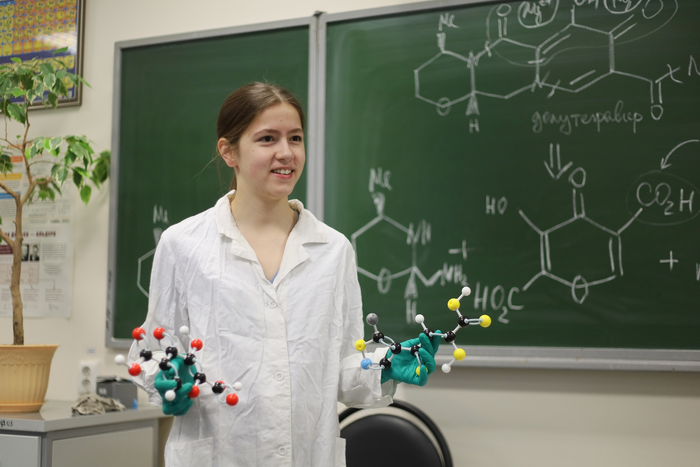Reviewed by Alex SmithAug 17 2021
A simple and highly effective technique has been designed by researchers from the Ural Federal University (UrFU, Russia) to generate fluorine-containing heterocycles.
 Diana Nigamatova optimized the reaction conditions and synthesized pyrones. Image Credit: UrFU / Anastasia Farafontova.
Diana Nigamatova optimized the reaction conditions and synthesized pyrones. Image Credit: UrFU / Anastasia Farafontova.
This method has been developed on the basis of available reagents to synthesize substances for use in agrochemistry and medicinal chemistry. A new study published in the journal Molecules explains the technique and the new compounds achieved using it.
One of the most well-known qualitative reactions in school chemistry is the bromination of the multiple bonds in alkenes. This transformation always proceeds smoothly and leads to discoloration of the bromine solution.
Dmitrii Obydennov, Associate Professor, Department of Organic Chemistry and High-Molecular Compounds, Ural Federal University
“We decided to investigate in this reaction complex molecules containing a double bond and a fragment of fluorinated 1,3-diketone, which can also be easily brominated. Despite the competition of these two bromination processes and the possibility of formation of a large number of byproducts, we managed to carry out the transformation with high selectivity and good conversion,” added Obydennov.
Analyses have revealed that the new technique can be employed to generate various new fluorinated 4-pyrones. The researchers explain that such pyrones tend to be very chemically active molecules and they selectively entered into a range of reactions.
These active molecules and the technique discovered could help create an extensive range of new fluorinated compounds that are considered as the basic heterocyclic structures for medicinal chemistry (substances with anticancer, antiviral, anti-inflammatory activity, etc.) and agrochemistry (fungicides, insecticides, herbicides, etc.).
This newly developed technique is considered one of the best for achieving fluorine-containing pyrones. This is due to three reasons. Firstly, it is a one-pot reaction. Secondly, it consists of a simple approach to detach the target product. Thirdly, it is quite general. This enables not just the nature of the aromatic substituent to be altered but also the length of the fluorine-containing chain and the number of fluorine atoms in it.
Together with our colleagues, we decided to study the reaction in detail in order to extend it to a wide range of compounds. We investigated the influence of the nature of the solvent on the bromination.
Dmitrii Obydennov, Associate Professor, Department of Organic Chemistry and High-Molecular Compounds, Ural Federal University
Obydennov continued, “It turned out that carrying out the reaction in dichloromethane or benzene was the best condition. By changing the number of bromine equivalents, we managed to achieve the introduction of two or three bromine atoms.”
“At the second stage of work, we investigated the cyclization of bromine-bearing molecules by intramolecular substitution of bromine to obtain heterocyclic compounds, 4-pyrones. To simplify the process as much as possible and increase its efficiency, we decided to synthesize the target pyrones in one-pot mode, that is, without isolating brominated intermediate products,” added Obydennov.
Journal Reference:
Usachev, S. A., et al. (2021) 2-Aryl-6-Polyfluoroalkyl-4-Pyrones as Promising RF-Building-Blocks: Synthesis and Application for Construction of Fluorinated Azaheterocycles. Molecules. doi.org/10.3390/molecules26154415.